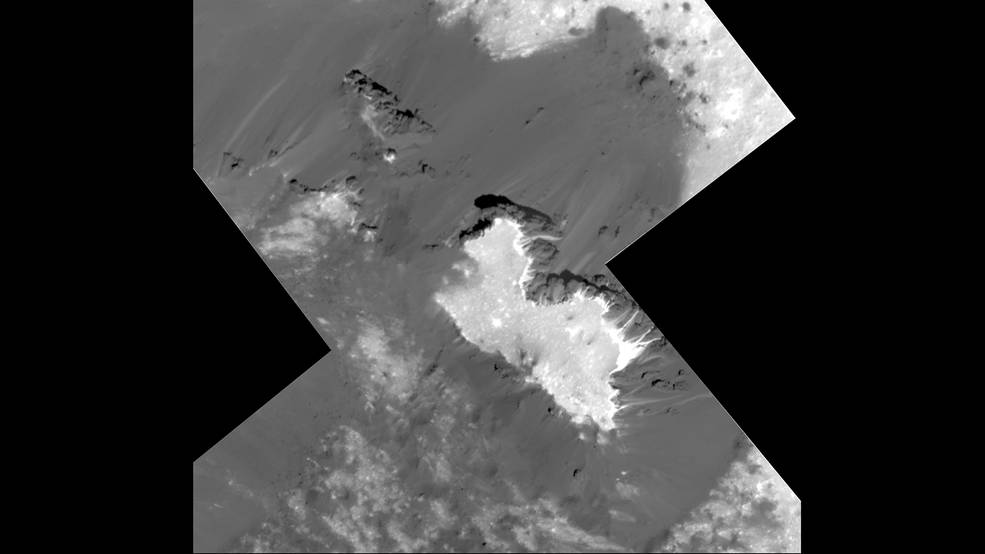Dawn probe sent detailed pictures of ceres' white spots: this is ordinary soda

These are the very spots at the maximum magnification available to astronomers.
Astronomers, observing near and far space objects, often encounter interesting phenomena and even mysterious phenomena. True, most of the mysteries are subsequently revealed - most often after scientists have at their disposal more powerful tools of observation.
It happened this time. Recently, the Dawn probe sent detailed photos of the very white spots that excited the minds of scientists and ordinary people. Among other explanations, one could come across the fact that these are domes of settlements of alien civilizations. But, unfortunately (and perhaps fortunately, who knows) the stains really turned out to be stained, and not the work of the brothers in their minds.
But first things first. Qualitative photographs of these objects were made after the Dawn probe entered the calculated orbit 35 kilometers above the surface of Ceres. In particular, the crater Occator , the “homeland” of the spots, as well as a number of other areas of the surface of the planetoid hit the lenses of its cameras . It is worth noting that the probe came out at a maximum approximation to the object of its research three years later after approaching an asteroid. So, three years ago, the probe orbit was 385 kilometers.

Pictures of the Occator crater taken by astronomers in 2016
Now the device was able to take photographs of the surface of the planetoid in the maximum resolution. In particular, this contributes to the minimum distance to the surface. And the photos that scientists have already studied, showed that the stains are really banal soda.
It is also found on Earth, so there is nothing unusual in such sediments. It seems that just in the center of the Okkator crater there is a
According to the engineers of the mission, the team is very happy that the riddle was solved. And all thanks to the scientific instruments of the apparatus, which were carefully checked before being sent into space.
Now scientists have to answer the question of where so much soda came from at Ceres. Professionals are very interested in what is the root cause of the appearance of such deposits. One hypothesis states that the spots formed during crystallization from a very saturated salt solution. Crystallization occurred after heating a subsurface substance as a result of a shock collision with an object like a large meteorite. Maybe there was no collision, but in fact, under the surface of the planetoid there are caverns with saline solution or even an entire ocean of very saline water. And this solution, gradually seeping through the cracks, crystallizes at the exit points.
In addition to soda, on the surface of Ceres discoveredand quite complex organic matter. They were found right on the surface of the dwarf planet. Scientists from Brown University believe that these sites may contain higher concentrations of organic matter than was thought. The results of their research, scientists told in an article published in Geophysical Research Letters.
“Our work shows that the interpretation of the results of experiments set up during the search for substances of a certain type may differ, and quite strongly,” said Hanna Kaplan, a representative of the South-West Research Institute.
In 2016, scientists proved that there is both water and cryovolcanoes on Ceres - just like on Enceladus. One of the most notable water sources is Mount Akhuna Mons, with a height of 4 km and a base diameter of 17 kilometers. This is the only mountain in Ceres, and it throws water onto the surface of the planetoid with dissolved ammonia and other chemical compounds.
Ceres- closest to the Sun and the smallest among the known dwarf planets of the solar system. It is located, like a number of other planetoids, in the asteroid belt. Ceres was discovered on January 1, 1801 by the Italian astronomer Giuseppe Piazzi at the Palermo Astronomical Observatory. For some time, Ceres was regarded as a full-fledged planet of the solar system. According to the results of the clarification of the concept “planet” by the International Astronomical Union on August 24, 2006, at the XXVI General Assembly of the IAS, it was referred to the dwarf planets. She was named after the ancient Romanian goddess of fertility, Ceres.
There is no doubt that in the future the planetoid will present many more surprises to scientists.
